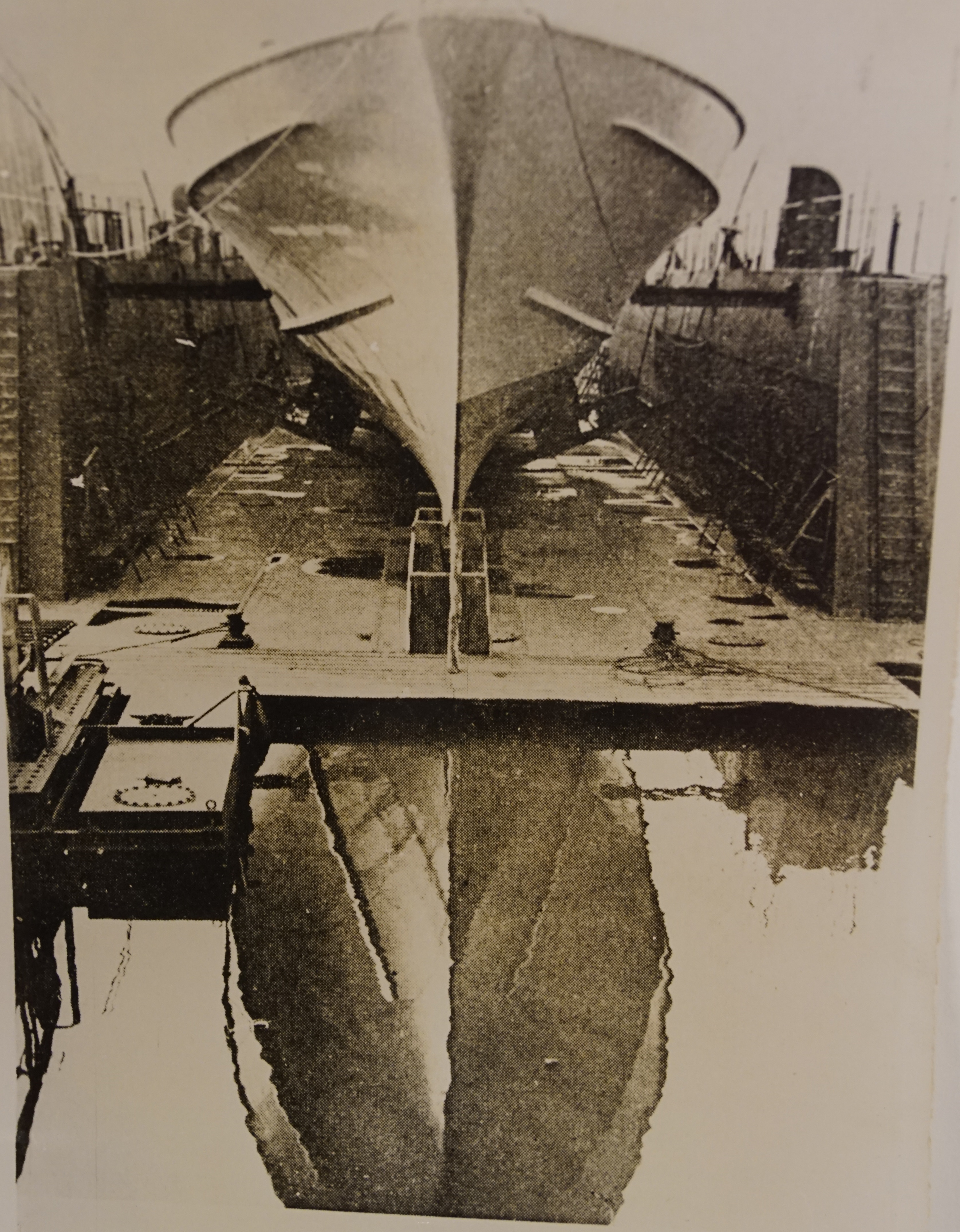

In a letter dated 2 April 1959 sent to the officer of the Royal Netherlands Navy stationed at Singapore was referred to a report dealing with a visit to the German Lürsenwerft at Bremen where at that moment motor torpedo boats of the Jaqguar-class were under construction. Boats of this kind were also to be delivered to Indonesia. The dimensions were 42,5 (waterline) x 7,14 x 4,4 (estimated hold) x 2,22 metres and a wash. Displacement of 120 ton. The hull consisted of a very light aluminium skeleton to which the wood was attached. The wood consisted of 3 layers 2 diagonal under 90 degrees and a third horizon at the outside which was under water made of teak but above the water of mahogany like the rest of the used timber, total thickness 5 cm. The bulkheads were of welded aluminium. The deck consisted of under 50 degrees fitted 1cm thick and around 120 centimetres width plywood covered by teak in along ship direction. The stern was made of 3 layers mahogany, Iroko and Mahogany. The machinery consisted of 4 V-engines (produced by Mercedes and Maybach delivering 12.000hp with 1.750 rpm driving 4 screws with 1,15 metres diameter and 1,50 metres speed allowing a speed of 43,8 knots. Two direct electric controlled rudders. The complete deckhouse was with 1cm thick special steel armoured. The armament consisted of 2x1-4cm machineguns, one on the main deck and one aft and 4 single 53,3cm/21” titled to the forward facing torpedo tubes. There were six torpedoes carried meaning just 2 reserve for the most forward tubes. The performance at sea was claimed to be excellent with the boats staying ‘dry’. The boats were named after predators and only built by either the Lürssenwerft or a shipyard with license at Rendsburg. Already 4 boats were delivered to Sweden an some to Indonesia. The Dutch intelligence officer described the boats as very beautiful and ‘schneidig’ although they would be have been even nicer if the stern was not vertical but sloping fitted.
Source
Archive Marine Inlichtingendienst Nederlands Oost-Indië en Nieuw-Guinea (1905) 1945-1963) 1989 inventory number 574.